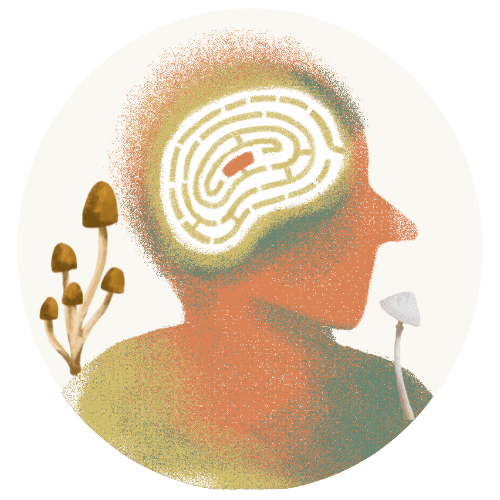Ketamine

Ketamine offers a psychedelic experience unlike any other—a temporary separation from the physical self that can provide profound perspective on trauma, depression, and consciousness itself. Originally developed as an anesthetic, this dissociative compound creates a unique "observer state" where users may explore memories and emotions from a detached yet insightful vantage point.
At Places to Trip, we approach ketamine with dual respect: for its growing role in mental health treatment, and for its potential as a carefully managed tool for existential exploration. When used intentionally, it can provide rapid relief from emotional pain while opening doors to mystical-type experiences at higher doses.
History
Synthesized in 1962 as a safer alternative to PCP, ketamine became a battlefield anesthetic in Vietnam before emerging as a club drug ("Special K") in the 1990s. Its psychiatric potential was discovered accidentally in the 2000s when researchers noticed depressed patients experiencing lasting relief after anesthesia. Today, it's the only legally prescribed psychedelic (as esketamine nasal spray for depression), while underground therapists continue exploring racemic ketamine's fuller effects. Recent studies at Yale and MAPS investigate its mechanisms for:
- Treatment-resistant depression (70% response rate within hours)
- PTSD and chronic pain syndromes
- End-of-life psychological distress
Effects
- Physical: Numbness, "heavy body" sensation, possible nausea
- Cognitive: Time distortion, ego dissolution, vivid closed-eye visuals
- Emotional: Emotional release (cathartic crying common)
- Perceptual:
"K-hole" at high doses (complete dissociation from body)
Out-of-body experiences with spatial distortion
Synesthesia (e.g., hearing colors)
The experience often feels "cosmic" or "alien" compared to classical psychedelics—more about inner space than enhanced external perception.
Duration
- Insufflated:
Onset: 5-15 minutes
Peak: 30-45 minutes
Total: 60-90 minutes - Intramuscular:
Faster onset (2-5 mins)
Longer peak (45-60 mins) - Afterglow: 2-4 hours of residual dissociation
Note: Unlike LSD/mushrooms, full reintegration happens quickly—often within 2 hours post-peak.
Medical Uses
FDA-approved esketamine (Spravato) for:
- Treatment-resistant depression (with oral antidepressant)
- Suicidal ideation reduction
Off-label clinics use racemic ketamine for: - CRPS/neuropathic pain (low-dose infusions)
- OCD and bipolar depression (emerging research)
Therapy protocols emphasize:
- Set/setting control (recliners, eye masks, curated music)
- Integration therapy post-session
- Booster schedules (initial 6 sessions over 3 weeks)
Risks & Side Effects
- Bladder toxicity with frequent recreational use
- Addiction potential (especially with escapism patterns)
- Anesthesia risks (choking if eating before)
- "K-cramps": Severe abdominal pain from chronic use
- Rebound depression when abused
Safer-Use Practices
- Frequency control: Max 1x/month for recreational use
- Hydration: Electrolyte drinks (avoid excess water)
- Sitter essential for doses >100mg insufflated
- Nasal care: Saline spray if insufflating
- Supplementation:
Green tea extract (bladder protection)
Magnesium (muscle tension)
NAC (neuroprotection)
Legality Awareness
- Schedule III (U.S.) for medical use
- Legal clinics in most U.S. states/U.K./Australia
- Decriminalized in parts of Canada
- Illegal recreational use nearly everywhere
- Gray market: Telehealth compounding pharmacies
Set & Setting Intro
Ketamine's dissociative nature demands special setting considerations:
- Clinical ideal:
Zero-gravity chair + weighted blanket
Eye mask + noise-canceling headphones
Therapist for integration - Recreational caution:
Safe "nest" with pillows (fall risk)
Soothing light projections (avoid screens)
Post-session grounding snacks (dark chocolate) - Never combine with alcohol/benzos/opioids
